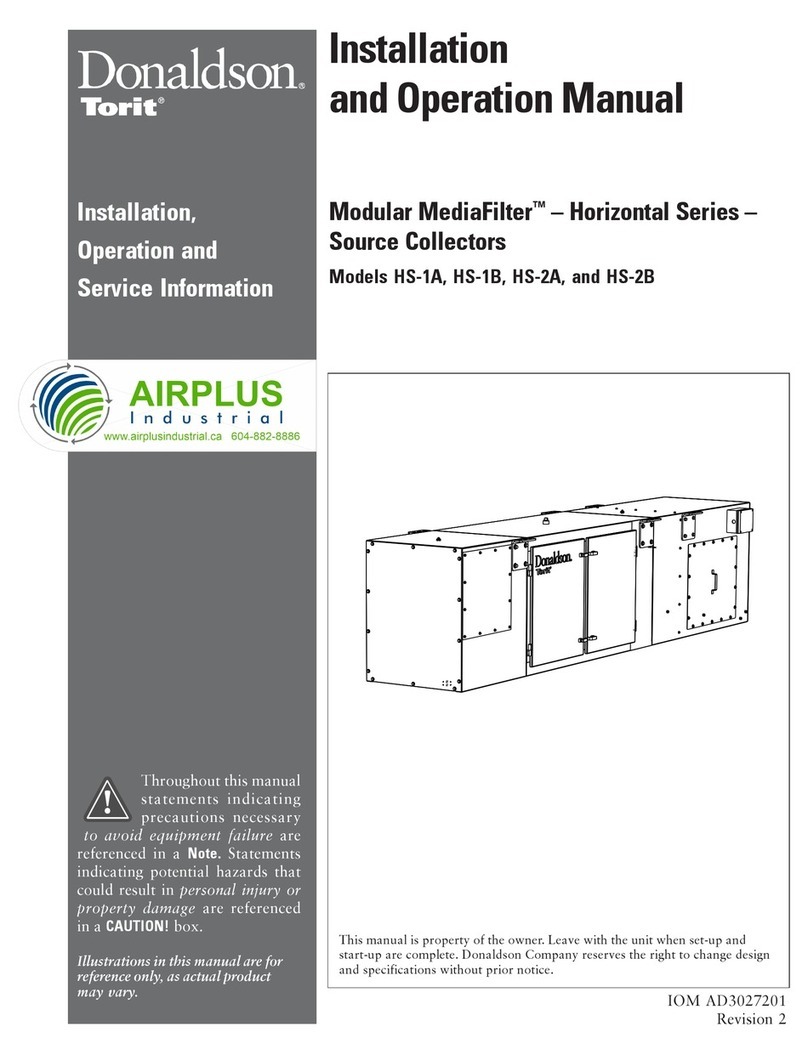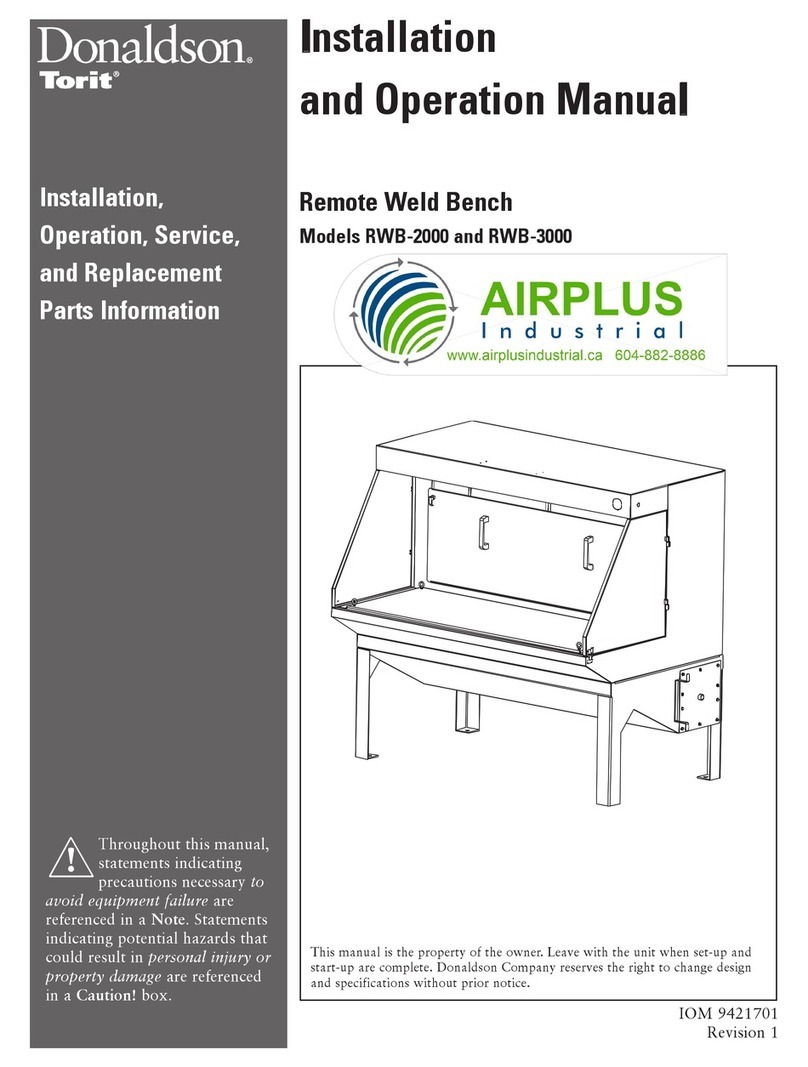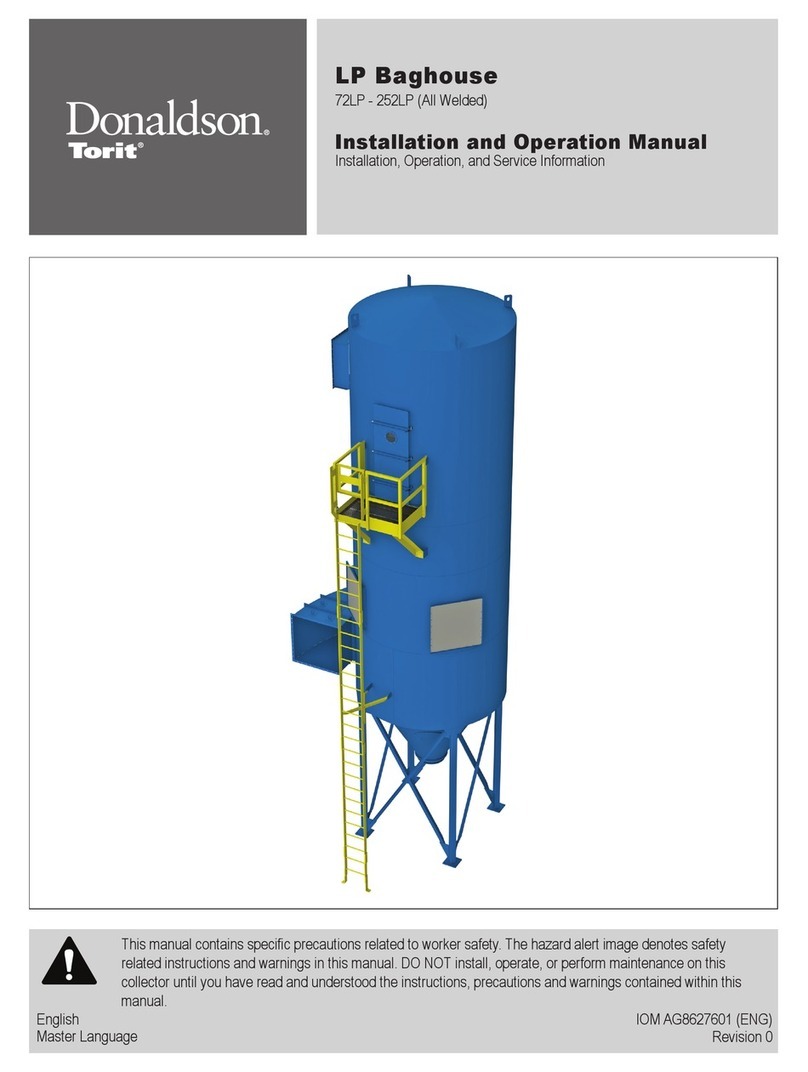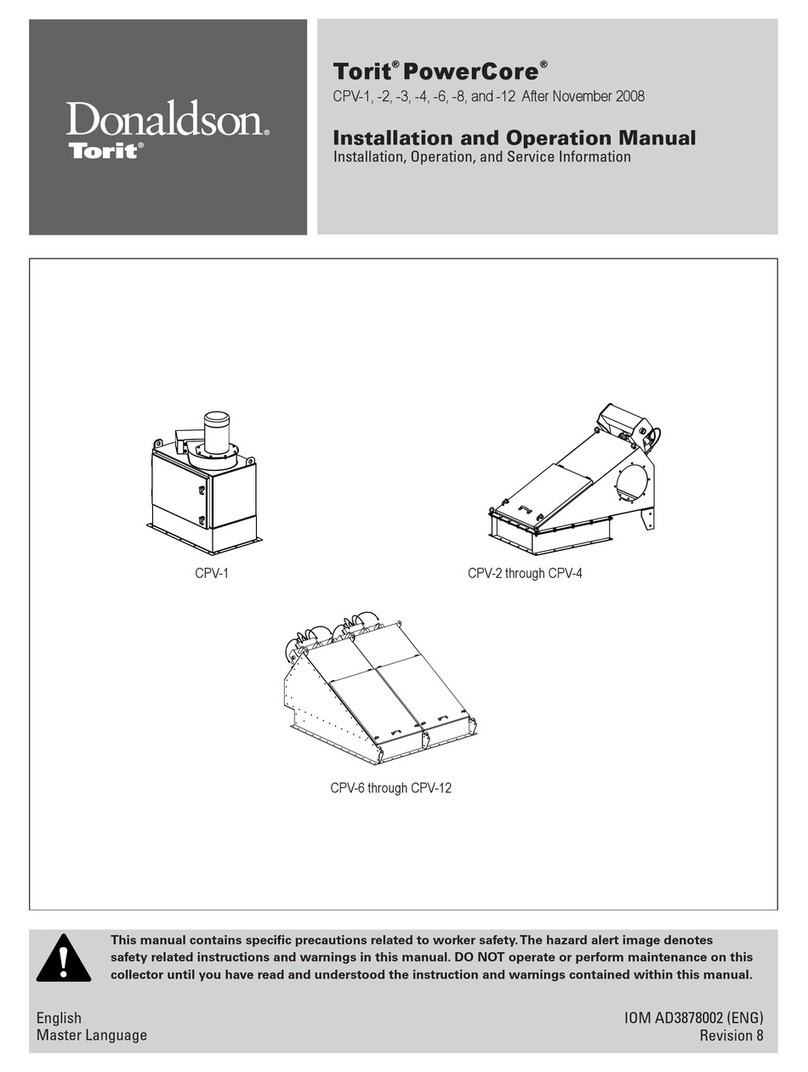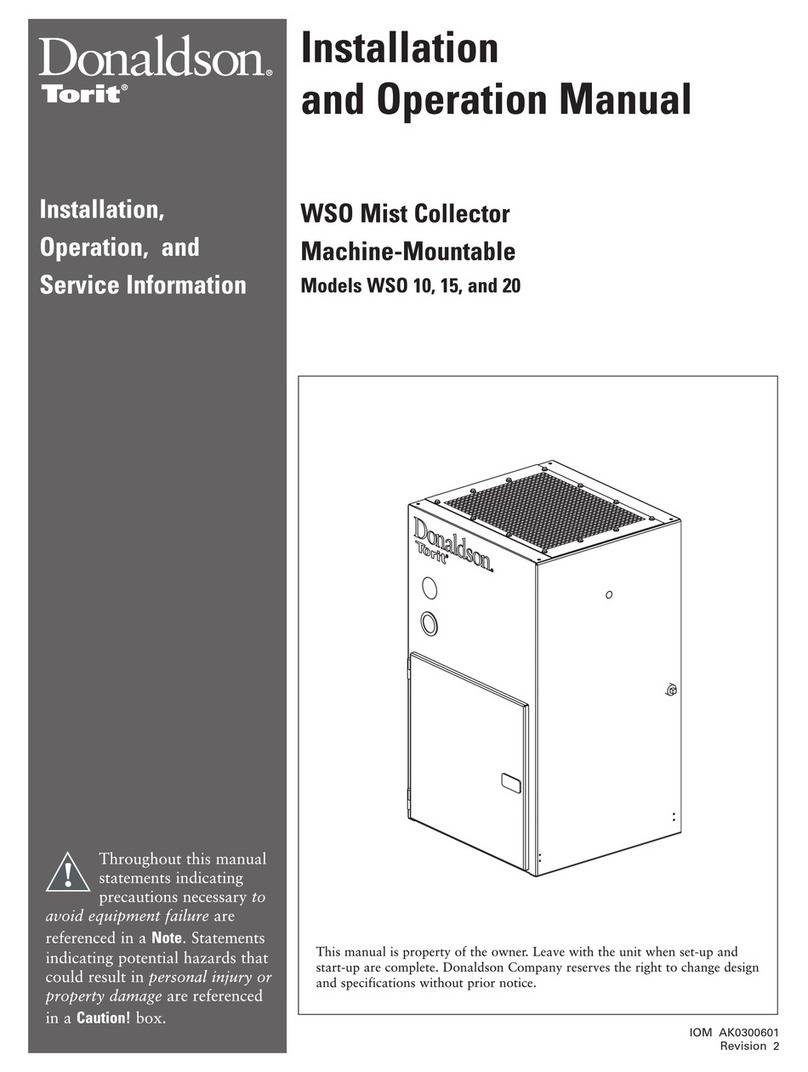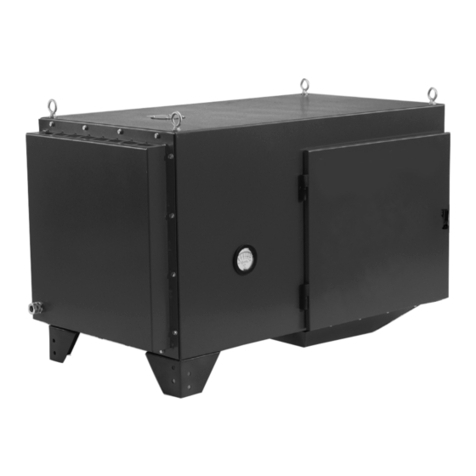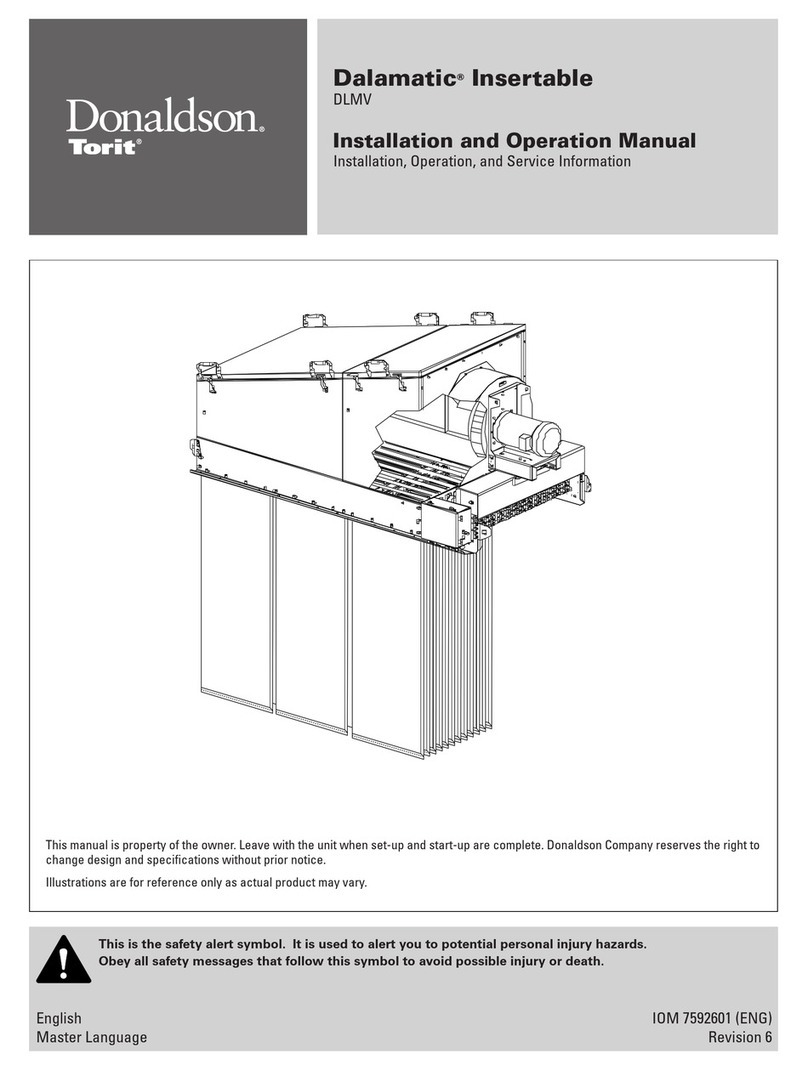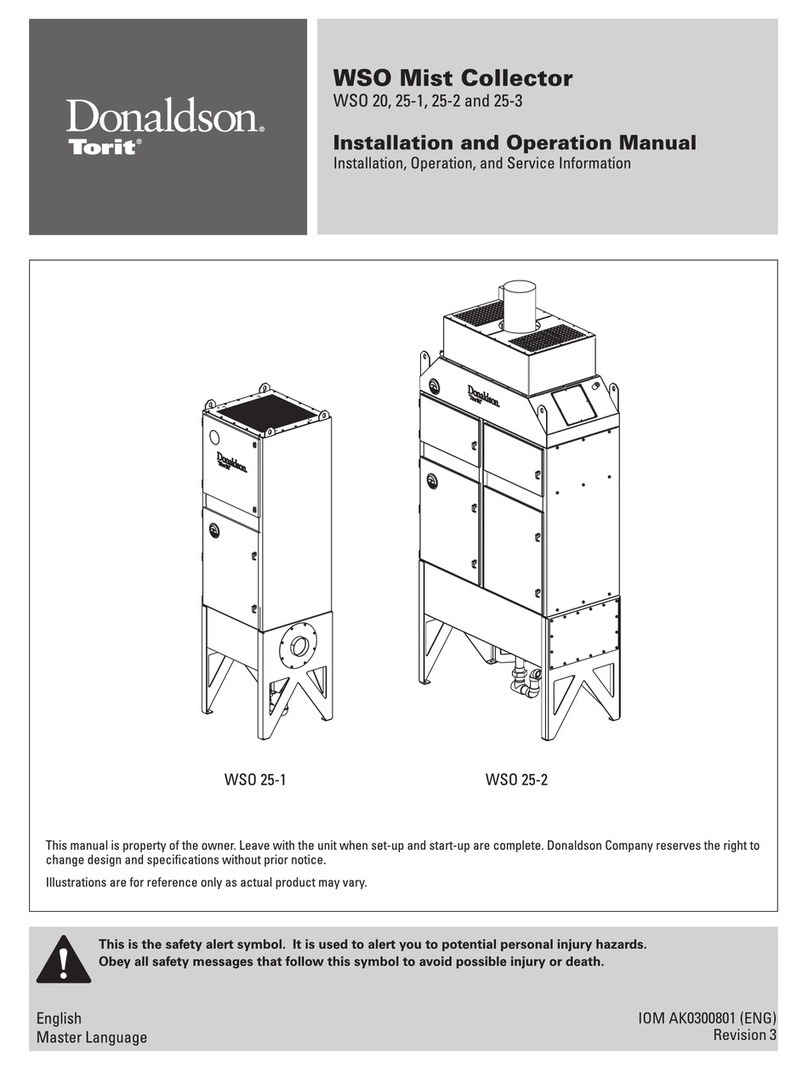
Downflo II, Model DFT 2-8 through 4-128
7
Inspection on Arrival
1. Inspect unit on delivery.
2. Report any damage to the delivery carrier.
3. Request a written inspection report from the
Claims Inspector to substantiate claim.
4. File claims with the delivery carrier.
5. Compare unit received with description of
product ordered.
6. Report incomplete shipments to the delivery
carrier and your Donaldson Torit representative.
7. Remove crates and shipping straps. Remove
loose components and accessory packages before
lifting unit from truck.
Installation Codes and Procedures
1. Safe and efficient operation of the unit depends
on proper installation.
2. Authorities with jurisdiction should be consulted
before installing to verify local codes and
installation procedures. In the absence of such
codes, install unit according to the National
Electric Code, NFPA No. 70-latest edition.
3. A qualified installation and service agent must
complete installation and service of this
equipment.
CAUTION!
OSHA may have requirements regarding
recirculating filtered air in your facility.
Consult with the appropriate local
authorities to ensure compliance with all
codes regarding recirculating filtered air.
Installation
Site Selection, Grade-Mounted Units
1. The unit can be located on a reinforced concrete
foundation or rooftop.
2. Wind, seismic zone, and other live-load
conditions must be considered when selecting
the location for rooftop-mounted units.
Reference the Specification and Rating
Information.
3. Provide clearance from heat sources and
interference with utilities when selecting the
location for grade-mounted units. Reference the
Specification and Rating Information.
4. Portable units require no special installation
accommodations.
Note: Units with explosion vents are not
available in portable configurations.
Unit Location
1. When hazardous conditions or materials are
present, consult with local authorities for the
proper location of the collector.
2. Foundation or roof support must be sized to
accommodate the entire weight of the unit, plus
the weight of the collected material, piping, and
ductwork. Reference the Specification and
Rating Information.
3. Prepare the foundation in the selected location.
Install anchor bolts to extend a minimum of
1 3/4-inches above foundation unless otherwise
indicated on the Specification Control drawing.
4. Locate the collector to ensure the shortest and
straightest inlet- and outlet-duct length, easy
access to electrical and compressed-air
connections, and routine maintenance.
CAUTION!
Donaldson Torit equipment is not
designed to support site-installed ducts,
interconnecting piping, or electrical
services. All ducts, piping, or electrical
services supplied by others must be
adequately supported to prevent severe
personal injury and/or property damage.
